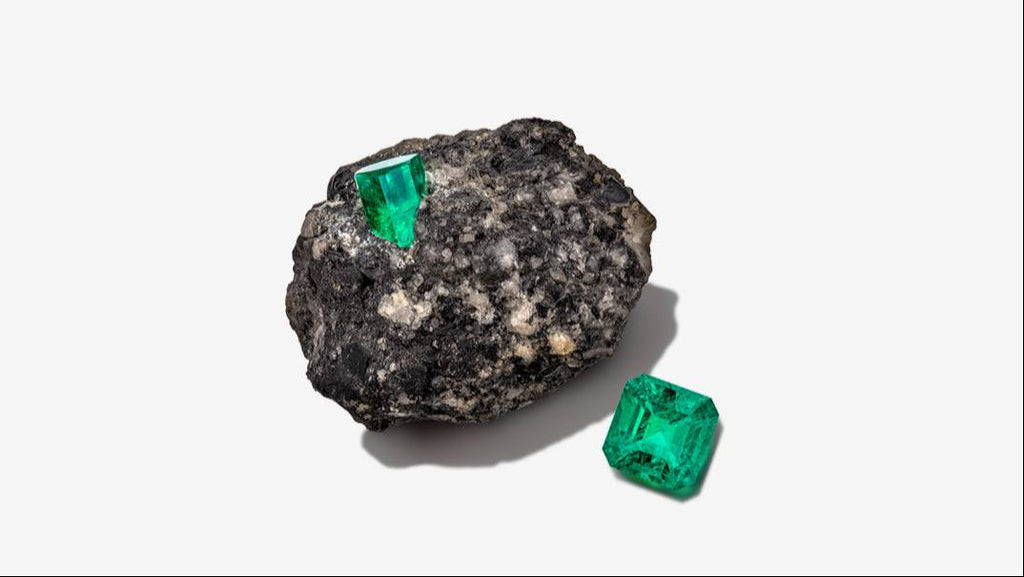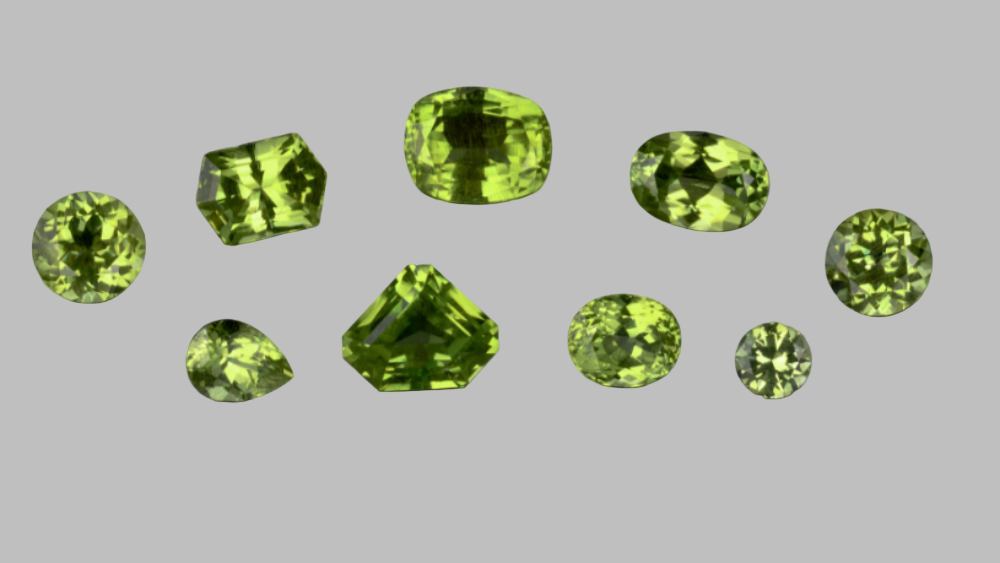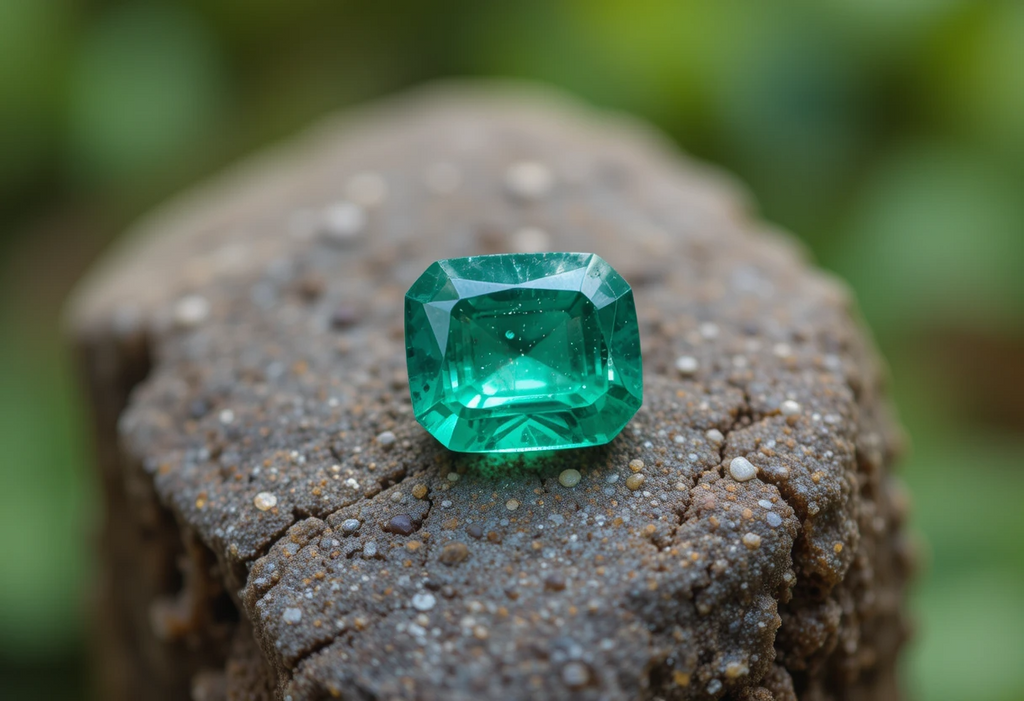How Natural Gemstones Are Born: A Journey Through Earth's Hidden Treasures
Gemstones have fascinated humans for thousands of years. These beautiful stones catch our eye with their colors and sparkle. But have you ever wondered how these precious gems come to life deep inside our planet? The story of natural gemstone formation is one of time, pressure, heat, and incredible natural processes that take millions of years to complete.
What Are Natural Gemstones?
Natural gemstones are minerals that form naturally in the Earth without any human interference. Unlike synthetic or lab-created stones, these gems develop through geological processes that happen over incredibly long periods. Each natural gemstone tells a unique story about the conditions present when it was formed.
The main difference between natural gemstones and their artificial counterparts lies in their origin. Natural gems form through various geological processes, while synthetic gems are created in laboratories using controlled conditions that mimic nature's methods but in much shorter timeframes. Understanding this distinction is crucial when choosing certified natural diamond jewelry that carries genuine geological authenticity.
Did You Know?
According to the Gemological Institute of America (GIA), some natural gemstones can take over a billion years to form!
The Basic Requirements for Gemstone Formation
For natural gemstones to form, several key conditions must be present:
Temperature and Pressure
Most gemstones form under extreme heat and pressure conditions found deep within the Earth. These conditions can range from moderate temperatures of 200°C to extreme temperatures exceeding 1,200°C.
Chemical Elements
The right combination of chemical elements must be available in the surrounding rock or fluid. Different gemstones require different chemical compositions to form properly.
Time
Gemstone formation is not a quick process. Most natural gems take thousands to millions of years to develop their final form and quality.
Space
Adequate space or cavities must be available for crystals to grow without interference from surrounding rocks or materials.
Learn more about geological processes at the United States Geological Survey (USGS)
Primary Methods of Natural Gemstone Formation
Igneous Formation Process
Many precious gemstones form through igneous processes, which involve molten rock or magma. When magma cools and solidifies, it can create perfect conditions for gem formation.
Slow Cooling Process
When magma cools slowly deep underground, large crystals have time to form. This slow cooling allows elements to arrange themselves in organized patterns, creating beautiful gemstones like quartz and feldspar.
Pegmatite Formation
Some of the world's finest gemstones form in pegmatites, which are extremely coarse-grained igneous rocks. These formations often contain rare elements that create exceptional gems like emeralds, tourmalines, and topaz.
Metamorphic Formation Process
Metamorphic processes create gemstones when existing rocks undergo changes due to heat, pressure, and chemical activity. This process transforms ordinary minerals into precious gems.
Regional Metamorphism
Large-scale geological forces can transform entire rock formations. During this process, minerals recrystallize under new conditions, sometimes creating valuable gemstones like garnets and sapphires.
Contact Metamorphism
When hot magma comes into contact with surrounding rocks, it creates localized zones of high temperature. These zones often produce beautiful gems like ruby and spinel.
Sedimentary Formation Process
While less common, some gemstones form through sedimentary processes involving water, weathering, and deposition.
Solution and Precipitation
Some gems form when mineral-rich water solutions deposit layers of material over time. Opals are perfect examples of gems that form through this gradual deposition process.
Organic Formation
A few gemstones have organic origins. Pearls form inside oysters and other mollusks, while amber forms from ancient tree resin that hardened over millions of years.
Hydrothermal Processes: Nature's Underground Laboratories
Hydrothermal processes play a crucial role in creating many of the world's most valuable gemstones. These processes involve hot, mineral-rich water that moves through cracks and spaces in rocks.
Hot Water Circulation
Deep underground, water heated by the Earth's interior dissolves various minerals as it moves through rock formations. As this water cools or encounters different chemical conditions, it deposits these minerals in new locations.
Vein Formation
Hydrothermal fluids often create veins in rocks, filling cracks and fissures with new mineral deposits. Many emerald deposits form this way, as beryllium-rich fluids interact with chromium-bearing rocks.
Geothermal Activity
Areas with active geothermal systems often produce unique gemstones. The constant circulation of heated water creates ideal conditions for gem formation over extended periods.
Specific Examples of Popular Gemstone Formation
Diamond Formation
Diamonds form under extreme conditions found only in the Earth's mantle, approximately 150 to 200 kilometers below the surface. The intense pressure and temperature at these depths transform carbon atoms into the crystal structure we recognize as diamond.
These precious stones reach the surface through volcanic eruptions that create kimberlite pipes, bringing diamonds from the deep mantle to areas where humans can eventually discover them. The rarity of these perfect formation conditions, combined with the billions of years required, makes natural diamonds truly exceptional. This is why choosing a trusted source for certified natural gemstones is essential to ensure you're receiving genuine Earth-formed treasures.
Ruby and Sapphire Formation
Both rubies and sapphires are varieties of the mineral corundum. They form in metamorphic environments where aluminum-rich rocks encounter high temperatures and pressures.
Rubies get their red color from trace amounts of chromium, while sapphires display various colors due to different trace elements like iron, titanium, and vanadium.
Emerald Formation
Emeralds form through hydrothermal processes where beryllium-rich fluids encounter chromium or vanadium-bearing rocks. This rare combination of elements creates the distinctive green color that makes emeralds so valuable.
Most emerald deposits form in metamorphic environments where these special chemical conditions can occur naturally.
For detailed information about gemstone properties, visit the International Gem Society
Factors Affecting Gemstone Quality
Several factors during formation determine the final quality and value of natural gemstones:
| Factor | Impact on Quality |
|---|---|
| Crystal Structure | Affects how light interacts with the gemstone, influencing brilliance and optical properties |
| Trace Elements | Create the colors we see in gemstones; type and concentration impact final appearance |
| Formation Environment | Stable conditions produce higher-quality gems with fewer inclusions |
| Geological Stress | Amount and type of stress can create internal features that enhance or detract from beauty |
Time Scales in Natural Gemstone Formation
Understanding the time required for natural gemstone formation helps us appreciate these incredible creations:
Crystal Growth Rates
Most gemstones grow extremely slowly, adding microscopic layers over thousands of years. This slow growth allows for the development of perfect crystal structures.
Environmental Changes
Changes in temperature, pressure, or chemical composition during formation can create zones or bands within gemstones, telling the story of changing conditions over time.
Geological Events
Major geological events like mountain building or volcanic activity can interrupt or enhance gemstone formation processes, creating unique characteristics in the final gems.
Fascinating Fact
Some diamonds contain inclusions that are over 3 billion years old, making them among the oldest materials on Earth! Source: Nature Geoscience
Modern Understanding and Technology
Today's technology helps us better understand how natural gemstones form:
Advanced Analysis
Modern scientific instruments allow researchers to study gemstones at the atomic level, revealing details about their formation conditions and history.
Geological Mapping
Satellite imagery and geological surveys help identify areas where natural gemstone formation processes are likely to occur.
Dating Methods
Various dating techniques help scientists determine when gemstones formed, providing insights into Earth's geological history.
Learn more about geological dating methods at Radiocarbon Web Info
Environmental Factors in Gemstone Formation
Tectonic Activity
The movement of Earth's plates creates the pressure and heat conditions necessary for many gemstone formation processes. Beyond their stunning beauty, natural gemstones formed through these powerful geological forces also offer remarkable properties and benefits that have been valued across cultures for centuries.
Chemical Composition
The availability of specific chemical elements in different regions determines what types of gemstones can form in those areas.
Water Activity
The presence and movement of water underground plays a crucial role in dissolving, transporting, and depositing the minerals that become gemstones.
The Journey from Formation to Discovery
After formation, natural gemstones must survive millions of years before humans can discover them:
Weathering and Erosion
Surface processes gradually expose gemstone deposits that formed deep underground, making them accessible for mining.
Secondary Deposits
Rivers and streams can transport gemstones far from their original formation sites, creating placer deposits where gems concentrate in sediments.
Human Discovery
Mining and exploration techniques have evolved to help humans locate and extract these natural treasures from various geological environments.
Explore mining history and techniques at the Mining History Association
Conclusion
The formation of natural gemstones represents one of nature's most remarkable achievements. These precious stones form through complex geological processes that require perfect combinations of time, temperature, pressure, and chemistry. Each natural gemstone carries within it the story of Earth's dynamic processes and the incredible forces that shape our planet.
Understanding how natural gemstones form helps us appreciate their true value beyond their beauty. These gems are geological time capsules that connect us to Earth's ancient history and the powerful forces that continue to shape our world today.
Whether formed in the intense heat of volcanic activity, the crushing pressure of mountain building, or the patient work of mineral-rich waters, each natural gemstone represents millions of years of geological artistry. This knowledge makes owning natural gemstone rings even more special, as each piece carries this incredible natural history. For those seeking to preserve wealth while owning these natural marvels, investment-grade gemstone jewelry offers both timeless beauty and enduring value.
Ready to Own a Piece of Earth's History?
Explore our exclusive collection of natural gemstone rings that showcase the beauty of these geological treasures. Each piece carries millions of years of Earth's creative forces.
Shop Natural Gemstone Rings




